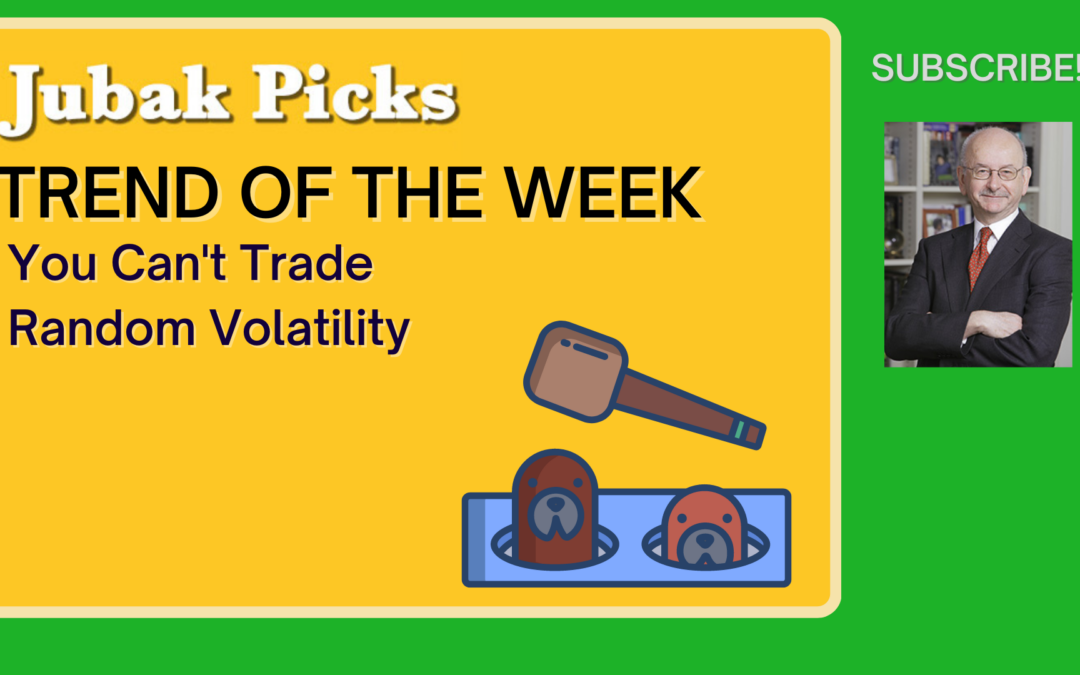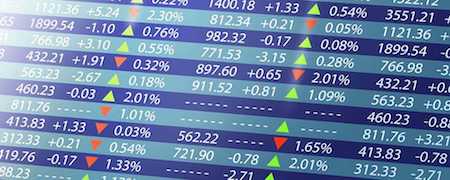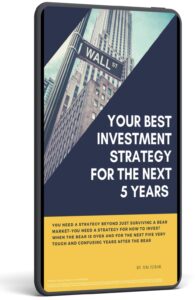
April 25, 2024 | Daily JAM, Videos |
Today’s video is NOW I’m Worried About Stocks. Investors and analysts have shown a willingness to pay for vapor in the last couple of days. The market reaction to two companies, Tesla (TSLA) and Apple (AAPL), has made this clear me.. Tesla’s earnings were terrible at $0.45 a share, below the expectations of $0.52 and revenue was down 50% year over year. However, the stock was up the day after earnings thanks to expert spin from CEO Elon Musk. He announced that Tesla will move ahead with the Robotaxis and full self-driving cars but it will also advance plans to produce a $25,000 car to enter the lower end of the market and compete with China. Although the company previously waffled on offering a more affordable Tesla, Musk was now suggesting it may be available at the end of 2024 or early 2025. When asked for more specifics, Musk declined to offer a definitive date on any of these promises. Wall Street ate it up and jumped on the spin that Tesla will be selling a more affordable vehicle “soon.” At this point, these are totally imaginary revenues from a car that has no release date and a full self-driving technology that doesn’t fully exist yet, and investors are saying they’re willing to pay for it? What worries me here is that in the market paying for spin has become normal because stocks go up on spin. Even if the product is “vapor,” investors are willing to get in on the stock bump associated with the announcement of imagined prospects. Similarly, Bank of America recently predicted Apple (APPL) is going to go up 36% soon because the company will announce its plans for adding AI into the iPhone. This is speculation on an announcement, not of the product itself, but on the prospect of an announcement. Bank of America is likely right on this, but I’m not willing to pay up for this speculative announcement without a tangible product or date and it concerns me that the market IS willing to do that. I understand the spins and the anticipation but the reaction and willingness to buy on vapors isn’t a sign of a healthy market.

November 10, 2023 | Daily JAM, Mid Term, Morning Briefing |
My bets on rising volatility have been hammered in the last few days. The December 20 Call Options on the CBOE S&P 500 Volatility Index (VIX) at $280 a contact dropped another 21% today to $121 a contract. The January 17 Call Options at 17 that I bought for $268 closed at $211, down another 16%.The VIX itself ended the day at 14.23, down 7% for the session. It’s sure hard looking at losses like this. But I would remind you that the VIX is very volatile. The volatility index was at 21.71 on October 20. And that the calendar is marked with two big events that could reunite financial market volatility, one courtesy of the House of Representatives and the other courtesy of the Federal Reserve.

June 20, 2023 | Daily JAM, Morning Briefing, Short Term |
I expect the end of the second quarter to be volatile as two contrary trends battle it out to set market direction.
May 10, 2023 | Daily JAM, Videos |
Today’s topic is Lots of Volatility – But It’s Not Tradeable. The market has not been responding as expected to recent events. On Friday, May 5, a combination of a chaotic market, a banking crisis, and job numbers that were much higher than expected, resulted in a completely unexpected market reaction. On previous behavior, these higher job numbers would have led to a conclusion that the Fed would continue to raise rates. Stocks would have tumbled. But Friday this time, we got a big rally in the news in the report. The market is vacillating between belief in a recession with banks failing, and belief in a strong job market where the Fed continues to raise rates. That’s created a scenario of wild swings, driven more, I’d argue, by where prices have been recently than by any trend in the news. You can see this in the VIX. The “fear index” rise as banks struggled but the jobs report said that it was alright to bid bank stocks (and the market in general) higher on the day even if the regional banking crisis is a long way from over. I’d prefer to trade volatility when “all” it requires is getting the direction of the news correct. Bu,t the current market requires getting both the trend in th news and the markrt’s reaction to that trend right in order to make a profit. That’s harder than I’d like and it seems prudent to wait for more predictable (and tradeable) volatility.

April 5, 2023 | Daily JAM, Dividend Income, DVN, Jubak Picks, Volatility |
Just in case there are readers who don’t watch my videos, but do follow my picks. Today, April 5, I added Devon Energy (DVN) to my Jubak Picks, Dividend, and Volatility Portfolios.

March 29, 2023 | VIX, Volatility |
Today March 29, the VIX dropped again, losing another 4.01% to 19.10. So I’ll be buying the June 21 Call Option with a strike price of 23 tomorrow. A contract for 100 shares closed at $305 today. This buy will go into my Volatility Portfolio.

March 23, 2023 | Daily JAM, Videos |
Today’s Quick Pick is SPDR S&P Bank ETF (NYSEARCA: KBE). I’m not suggesting buying this now: I’m suggesting you watch this and buy Put Options on this ETF when the time is right. The SPDR S&P ETF is approximately 80% regional banks. As you can imagine, it took a huge hit during the recent banking scare and would have been a great Put Option last week during the plunge in the sector. Options are a way to leverage the volatility of this market. The recent exit of my VIX Call Option resulted in a 100% gain in about a week. For KBE, I’d look at Put Options that climb in value as the price of the ETF sinks. At the time of recording, KBE was selling at about 37. I’m looking at the June 16 Put at a strike price o 38. At the moment, the Put is deeply underwater but I’ll continue to watch this rally to see when it’s worth it to jump in. At the moment, I suggest you watch this one: Don’t buy just yet but wait for the next shoe to fall in the banking crisis.

March 21, 2023 | Daily JAM, Morning Briefing |
On March 6, I bought the May 17 Call Options with a strike of 23 on the CBOE S&P 500 Volatility Index (the VIX) when the index traded at 18.61. I figured that the “Fear Index” was so low that it wouldn’t take much to push it and these options higher. A week later the options were up 116% after the VIX climbed to 26.52. Historically, that isn’t a very high reading for the VIX, which can easily hit 35 to 45 when fear engulfs the market. I’m still holding my June 21 Call Options with a strike of $23. But I’ve been looking for a chance to replay that earlier trade. Somehow (LOL) I don’t think this market is done with volatility.

March 21, 2023 | Daily JAM, Short Term, Videos, VIX |
This week’s Trend of the Week: There is no Trend. When I was filming this video on Tuesday the 14th, the S&P was up almost 2%, the DOW was up almost 1.5%, the NASDAQ was up 2.23% and the VIX, which had been climbing higher with the Silicon Valley Bank collapse, was down almost 15%. Since filming, the markets dipped sharply with the threat of Credit Suisse going under, and have trended slightly upward since. If you’re going to trade in this market, you have to do one of two things. One thing is to be very fast, and trade on the bounces as they show up. The other tactic is planning ahead. Long-term in this market is about a week. A week prior to filming (3/6) I bought Call Options on the VIX (the volatility index) and I sold them on March 13 with a 108% return. On March 14, however, those VIX Call options were down 27%. Talk about volatility! The trend is, there is no trend. Subscribe to my JubakPicks.com to get timely posts on how to keep up with the chaos. For more options and other volatility plays, subscribe to JubakAM.com.

December 23, 2022 | Daily JAM, Morning Briefing, Videos, VIX, Volatility |
Today I posted my two-hundred-and-nineteenth YouTube video: Fear Is Still on a Holiday Today’s topic: Fear is Still on a Holiday. This is a peculiar market for many reasons. Stocks are sinking, but volatility fear doesn’t seem to be rising. On December 20, for example, the S&P 500 fighting a 5-day losing streak. Havens of safety were getting smaller. Pharmaceuticals and airlines, which have been strong recently, sold off on December 19. Searching for glimpses of green, like Coke (up just .14%) in a sea of red is getting harder and harder. What’s curious though, is the VIX, the CBOE Volatility Index, better known as the “Fear Index” remains on the average to low end of its recent and historic range. their recent range. The VIX tracks prices for options and futures on the S&P, so as people, in fear of a downturn, hedge by buying “insurance” against a market drop, the VIX rises. But right now we’re seeing a market that truly stinks–that’s a technical term, I know, but you can Google it–while the VIX remains low, showing little sign of fear. My explanation is that at the end of the year, investors aren’t looking to hedge against a market they still hope will turn around. The VIX is an interesting short-term play here. Buying a Call option with a 60-day out as the market returns to fear, or rationality, in 2023 could be the way to go. I’m going to check on the up-to-the-minute price action and see if the Call option is attractive here. Look to my paid JubakAM.com and my free JubakPicks.Com sites on Friday for a buy or not.

June 27, 2022 | Daily JAM |
My one-hundred-and-fiftieth YouTube video “Trend of the Week: You Can’t Trade Random Volatility” went up today. I like volatility–much of the time. It’s a source of potential profits. However, when the volatility seems random as it does right now, it’s difficult to trade well, as each choice feels like a roll of the dice. Why was Plug Power (PLUG) up 11% in a day, while Pioneer Natural Resources was down 8% that same day–only to have their situations reverse the next day? It seems that much of this is driven by trader sentiment (It’s been down so isn’t it due to move up?) as opposed to actual market news.

June 6, 2022 | Daily JAM, Jubak Picks |
I’m seeing a lot of traders buying Alcoa (AA) Call Options ahead of the company’s July 21 earnings report. The action seems to be most concentrated on the $70 October 21 Call at $75. The stock closed at $64.10 today, June 6, up 3.53%. I think the Call Buying is a result of the very big spread in estimates for second quarter earnings with the high estimate at $4.01 and the lost at $3.19. The consensus for the quart is at $3.66. That would be a huge gain from the $1.49 reported in the second quarter of 2021.













